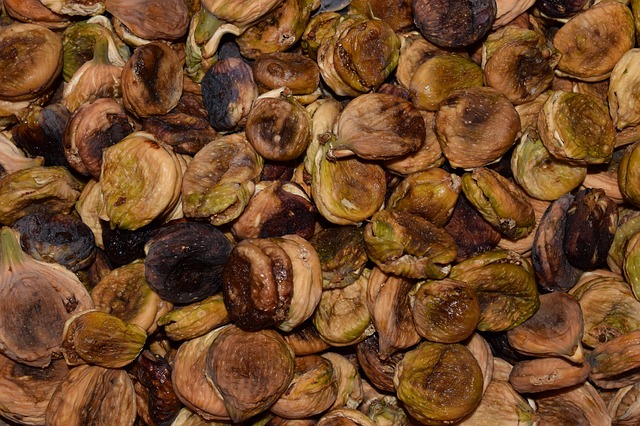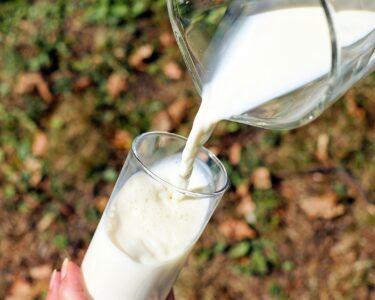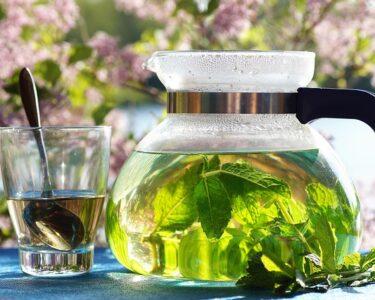There are so many myths and traditional beliefs predominated in our society. Even today, we are guided by several myths and traditional beliefs. Among the myths, some are false whereas others have some scientific basis. Do you have a common curiosity that how true are these myths? Let’s pick up a few myths around food for treating anemia and check the facts.
1. Myth vs Fact for anemia: Fig/Anjeer is rich in iron
Fresh anjeer or figs are not a good source of iron. 100g of fresh fruit contains only 0.725 mg iron. But the dried figs are rich in iron, providing 2.175 mg per 100g. (1)
The vitamin-C content of fresh figs is 1.86 mg per 100g whereas that of dried figs is 1.24 mg /100g. (2) Vitamin C helps in iron absorption. Moreover, both fresh and dried figs or anjeer are rich in several minerals, vitamins, and phytochemicals. So, regular intake of figs, either fresh or dried, is helping to improve overall general health and boost immunity. (3, 4)
But does fig helps to treat anemia?

Yes, even if dry figs are not the highest source of iron, but it is proved to be useful for improving hemoglobin levels in the blood.
A scientific study suggested that a regular intake of about 50g of dried Figs daily can increase the hemoglobin content of anemic patients. The increases in hemoglobin levels are around 0.5% each week. (5)
It is scientifically proven that regular intake of dried figs has several positive effects on our blood. (6) These are –
- It increases the hemoglobin level.
- Figs improve the platelet count.
- The hematocrit (packed cell volume) also improved.
2. Myth vs Fact for anemia: Pomegranate helps to increase the blood volume

There is a traditional belief that a regular intake of pomegranate is good for anemic patients. It helps to produce blood and /or improve hemoglobin levels. Pomegranate is a healthy fruit, rich in several minerals, vitamins, and a lot of antioxidants. It has several medicinal benefits. (7)
The iron content of 100g of fresh pomegranate is 1.79mg. There is scientific evidence that regular intake of fresh pomegranate or freshly extracted juice, is very effective to increase the hemoglobin content of blood, and red blood cells, and hematocrit levels within a short period of time. The result is usually noticed within 2 weeks. (8)
3. Myth vs fact for anemia: Green banana/ plantain green/raw banana is good for treating anemia

Among the vegetables, plantain green/ raw banana/ green banana is a good source of iron. 100g of green banana provides 6.27 mg of iron and 24mg of vitamin C. The presence of vitamin- C helps in the absorption of iron. So, it should be a choice of vegetable for anemic persons.
But almost all green leafy vegetables are a richer source of iron compared to green bananas. Cauliflower greens are the richest source of iron, providing as high as 40mg of iron /100g. Turnip greens (28.4 mg /100g), Bengal gram leaves (23.8 mg /100g), radish leaves (18 mg /100g), beet greens (16.2 mg /100g), and mustard leaves (16.3 mg /100g) are other rich sources of iron. So, it is wise to take green leaves rather than depending on plantain green.
4. Myth vs fact for anemia: Beetroot is effective to increase hemoglobin level

Beetroot is a highly nutritious vegetable, rich in many minerals, vitamins, and antioxidants. It is a rich source of B complex vitamins like niacin, pantothenic acid, pyridoxine, etc. It is a good source of iron, manganese, copper, and magnesium.
The typical crimson-red color of the beet is due to the presence of two pigments betanin and betacyanin.
Studies confirm that beetroot can effectively increase the hemoglobin content of the blood. (9, 10)
But surprisingly beet is not a good source of iron and vitamin C, 100g of beet contains only 1.19mg of iron and 10mg of vitamin C. Beet is beneficial for anemic persons because –
- It is a rich source of folic acid, which helps in the production of red blood cells (RBCs). (11)
- It is rich in antioxidants which decreases the destruction of RBCs. (12)
A regular intake of 100g of fresh beetroot can improve the hemoglobin level within a short period. The result is visible within 20 days. (13)
5. Myth vs Fact for anemia: Watermelon is helpful for anemic patients

Watermelon is rich in many minerals, vitamins, and several antioxidants. Usually, fruits are not a good source of iron but watermelon is an exception. 100g of this fruit provides a7.9mg of iron. Moreover, watermelon contains citrulline which is a strong antioxidant. It helps to prevent anemia. (14)
So, having watermelon in season on a regular basis is helpful for almost everyone especially for people suffering from anemia, diabetes, cardiac diseases, and hypertension.
6. Myth vs Fact anemia: Plantain flower or banana flower or banana blossom is rich in iron

Banana flower (commonly called mocha in Bengal) is a commonly consumed vegetable. This vegetable is not a good source of iron, 100g of fresh plantain flower provides only 1.16 mg of iron and 16mg of vitamin C. Moreover, it is a rich source of tannins, which reduces the absorption of iron from the gut. So, don’t believe in the myth, know the scientific fact. The banana flower is not any help to overcome anemia. (15)
7. Myth vs Fact anemia: Kulekhara leaves are very useful to treat anemia
It is a common belief of rural people that kulekhara leaves can treat anemia within a short time. Whenever we feel weak and look pale, our grandmom always suggested taking kulekhara leaves for a few days.
But what is kulekhara? Kulekhara is a widely grown, neglected green leafy vegetable. It is used more as herbal medicine, rather than as a green (saag).
Animal (rat) experiment confirms that kukekhara leaves can significantly increase the hemoglobin value, RBC count, and total WBC count of the animals. (16)
Human studies also show the same pattern as a result. Kulekhara leaves are very effective to improve hemoglobin levels and red blood cells. Consequently, this green helps to clear all the symptoms of anemia like fatigue, dizziness, insomnia, pallor, and edema. (17)
100g of fresh kulekhara leaves are a rich source of both iron (7.03 mg /100g) and vitamin C (50.08 mg /100g). Hence it can be conferred from various scientific facts that the nutritional potential of Kulekhara leaves can be utilized to improve the iron status of the anemic patients.
8. Myth or Fact for anemia: Cauliflower leaves are worthless

Cauliflower leaves are abundantly available in the vegetable market in season. It is just wasted. It is the richest source of iron, providing as high as 40g of iron per 100g of fresh leaves. You will be surprised to know the fact that cauliflower leaves are more nutritious than cauliflower itself. But due to ignorance we have discarded these nutritious, tasteful greens and thrown them into the dustbin.
For this reason, this green is commonly available at zero cost in most parts of India. But Orissa is the exception. Tribal people of Orissa are aware of the health benefits of these leaves. Here it is not wasted. People have purchased this green as a low-cost vegetable. A big bundle of leaves is sold for five rupees. It is popular here.
You can prevent anemia by regularly consuming this green throughout the winter. You can even sun-dried these greens and ground them into powder, incorporating this nutrient-dense leaf powder into various recipes. This will help you to introduce variety as well as help your family members to maintain their optimum health.
Bottom Line
There are many myths related to the prevention and cure of anemia. We do not know which one is true or false. Fresh figs are not a good source of iron but dried one is a good source of iron. Green banana has a comparatively higher iron content. But it is comparatively less than most of the green leafy vegetables. Don’t waste, utilize the iron potential of cauliflower leaves. Intake of red-colored fruits like watermelon and pomegranate help to increase hemoglobin levels and thus prevent anemia. Beetroot is also beneficial for anemic patients. Kulekhara leaf is also effective to prevent and cure anemia. Focus on improving the quality of daily diet to treat and prevent anemia.





